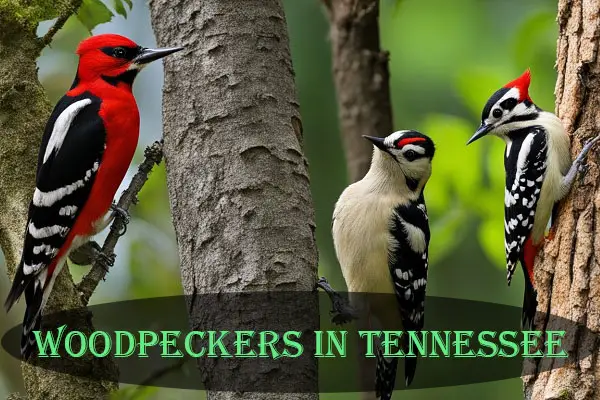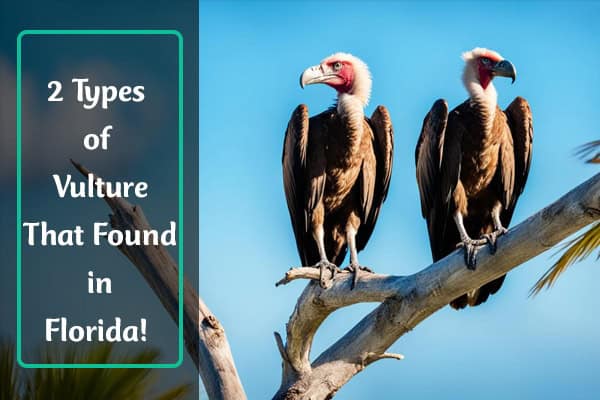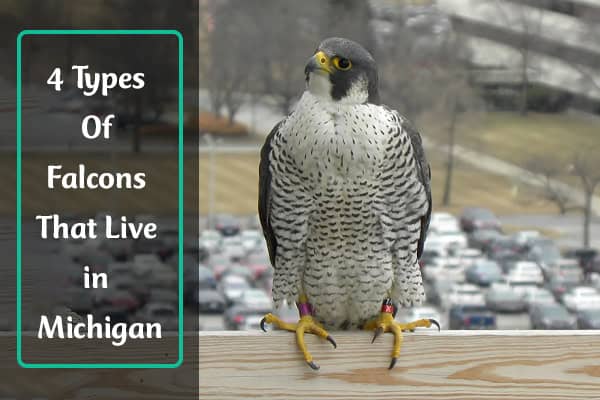4 Types Of Falcons In Texas (With Pictures)
Ever seen a falcon soar through the sky, looking for food? If not, you’re in for a treat. Texas is home to five amazing types of falcons. You can see these birds in their natural spots. Let’s dive into the world of Texas’ falcons and learn about their unique traits.
Introduction to Texas Falcons
Texas is the second biggest state in the U.S., home to many bird species, including falcons. It has everything from wetlands and swamps to deserts and prairies. These places are perfect for falcons to live and hunt. Places like Bolivar Flats Shorebird Sanctuary, Aransas National Wildlife Refuge, and Big Bend National Park are great for seeing these birds.
| Falcon Species | Habitat Preference | Key Characteristics |
|---|---|---|
| Aplomado Falcon | Coastal grasslands, deserts, and prairies | Slender build, long pointed wings, blue-gray back, and barred underparts |
| Prairie Falcon | Dry, open habitats like grasslands, shrublands, and deserts | Powerful, stocky build, brown back, and pale underparts with dark brown spots |
| American Kestrel | Open areas, farmlands, and urban environments | Smallest falcon in North America, reddish-brown back, and blue-gray wings |
| Merlin | Forests, woodlands, and urban areas | Medium-sized falcon, dark gray or brown back, and spotted underparts |
| Peregrine Falcon | A variety of habitats, including coastal areas, mountains, and urban centers | Powerful, large falcon, blue-gray back, and barred underparts |
1. Aplomado Falcon
- Scientific name – Falco femoralis
- Lifespan – 8 years (average)
- Size – (38 to 43 cm)
- Weight – (208 to 500 g)
- Wingspan – (76 to 100 cm)
The Aplomado Falcon is a medium-sized bird with a long tail and wings. It has a dark brown or slate blue back and tricolored underparts. The face shows off black and white stripes, and its tail is also black and white. It makes a unique sound, a distinctive kek.
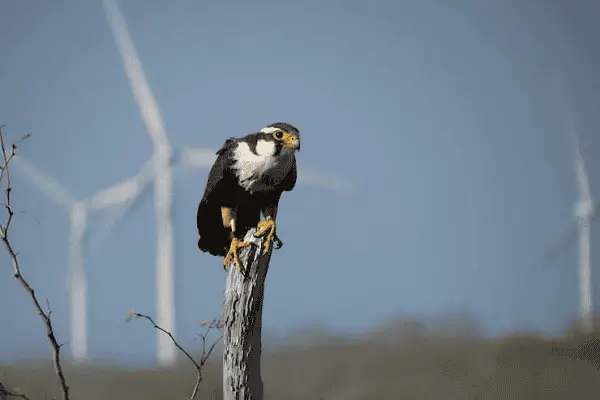
Nesting and Breeding Habits
Aplomado Falcons live in open grasslands and woodland areas near marshlands. They often take over nests made by other birds like crows and hawks. They can be fierce, pushing out other birds to make their nests their own. The nests are usually in Yucca plants or trees, sometimes on poles or the ground.
Female Aplomado Falcons lay two to four eggs at a time. These eggs are incubated for 31-32 days. After 28-35 days, the young birds leave the nest.
Diet and Hunting Strategies
Aplomado Falcons eat birds, insects, lizards, and small mammals. They are quick and agile hunters. They chase their prey in the air and on the ground, using their speed and skill to catch it.
Conservation Status and Threats
Once common in the southwestern U.S., including Texas, the Aplomado Falcon almost disappeared by the 1930s. Pesticides, habitat loss, and prairie dog eradication were the main reasons. To help bring them back, over 1,500 birds were released in Texas in the 1980s.
Today, there are about 200,000 Aplomado Falcons worldwide, but they are still rare and endangered in the U.S. Only around 100 live in Texas. They face threats like pesticides, habitat loss, overgrazing, and dangers to their food supply.
Where to Find Aplomado Falcons in Texas
In Texas, Aplomado Falcons live in the southeast and far west Trans-Pecos. They like grasslands and desert areas with Mesquite and Yucca plants. The best places to see them are Mustang Island State Park, Laguna Atascosa National Wildlife Refuge, Aransas National Wildlife Refuge, and Bentsen-Rio Grande Valley State Park.
| Statistic | Value |
|---|---|
| Aplomado Falcon Population in Texas (2017) | 39 breeding pairs, 52 chicks raised |
| Impact of Hurricane Harvey (2018) | At least 10 breeding pairs lost |
| Aplomado Falcon Population Recovery (2019) | 24 breeding pairs, 32 chicks raised |
| Aplomado Falcon Measurements | Total length: 15-18 inches, Wingspan: 32-36 inches, Weight: 7.5-18 ounces |
| Aplomado Falcon Diet | 97% birds by weight, including 43 species in Mexico |
2. Prairie Falcon
- Scientific name – Falco mexicanus
- Lifespan – 3 years (average)
- Size – (37 to 47 cm)
- Weight – (420 to 1100 g)
- Wingspan – (90 to 113 cm)
The Prairie Falcon is a medium-large falcon species found in the western parts of North America. These birds stand out with their unique looks, nesting habits, and hunting ways.
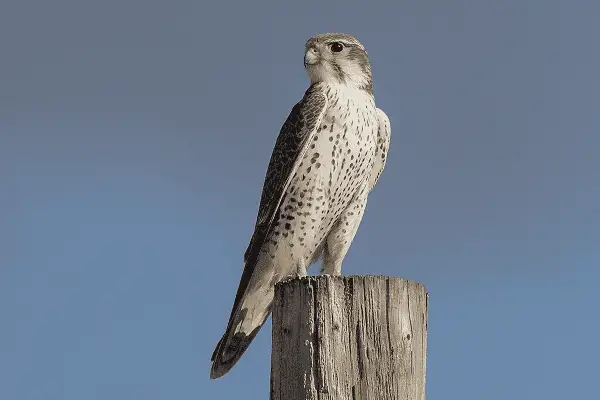
Appearance and Distinguishing Features
Prairie Falcons are bigger than Merlins but smaller than Swainson’s Hawks. They have a special color pattern. Their upper parts are brown, and their underparts are whitish with brown marks on the breast and belly. You can spot them by the pale line above their eye and the brown “mustache” on their face. They make a kik-kik-kik sound.
Nesting and Breeding Behavior
Prairie Falcons love open country and nest on cliffs and bluffs. They use simple nests or those built by other birds. The female lays 2 to 6 eggs, which she incubates for 29-39 days. After 29-47 days, the young birds leave the nest.
Prey and Feeding Habits
Prairie Falcons eat a mix of birds, small mammals, and insects. They hunt from low down, flying powerfully and surprising their prey. They eat doves, larks, and small mammals like ground squirrels.
| Characteristic | Value |
|---|---|
| Average Length | 40 cm (16 in) |
| Wingspan | Approximately 1 meter (40 in) |
| Average Weight | 720 g (1.6 lb) |
| Male Size | 37 to 38 cm in length, 500 to 635g (1.1 to 1.4 lbs) |
| Female Size | Approximately 45 cm in length, 762 to 970g (1.7 to 2.1 lbs) |
| Conservation Status | Least Concern (IUCN 3.1) |
The Prairie Falcon is a unique bird that lives in the American West’s open areas. It’s known for its looks, nesting habits, and hunting skills. Birdwatchers and nature lovers find it very interesting.
3. American Kestrel
- Scientific name – Falco sparverius
- Lifespan – 5 years (average)
- Size – (22 to 31 cm)
- Weight – (80 to 165 g)
- Wingspan – (51 to 61 cm)
The American Kestrel is the smallest falcon in Texas, looking like a Mourning Dove. The male has slate-blue wings and a rusty, black-barred back. The female is rusty with black barring on her upper side. Both have a grey crown and dark moustachial stripes on their face. They make a call that sounds like Klee or Killy.
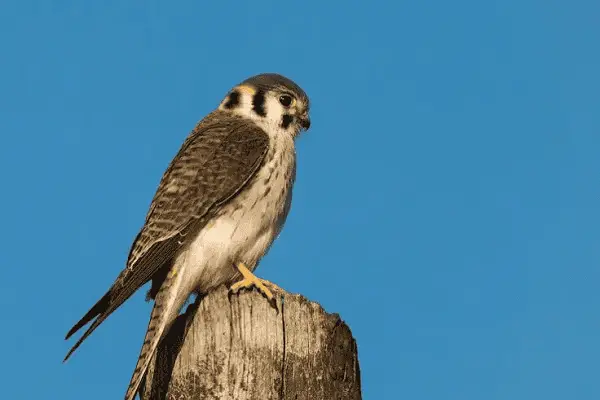
Nesting Sites and Breeding Season
American Kestrels live in open areas and use old woodpecker holes or rock crevices for nests. They also use nest boxes and building corners. Trees near woodlands or open spaces are their favorite spots. The female lays four to five eggs, and they may have up to two clutches a season. The eggs take 26-32 days to hatch, and the young birds leave the nest after 28-31 days.
Diet and Hunting Techniques
American Kestrels eat many things like cicadas, beetles, and spiders. They also hunt songbirds, snakes, and small mammals. They like to hover low in the breeze to find food.
Population Status and Conservation Efforts
Despite having many, about 9.2 million, American Kestrels, their numbers have dropped by 53% in fifty years. The loss of homes and less food from farming are big threats. Pesticides also harm them by killing their food. Conservation efforts focus on protecting their homes and providing more nesting spots.
4. Peregrine Falcon
- Scientific name – Falco peregrinus
- Lifespan – 13 years (average), 19 years (maximum recorded)
- Size – (36 to 49 cm)
- Weight – (530 to 1600 g)
- Wingspan – (100 to 110 cm)
The Peregrine Falcon is famous in Texas for being the fastest animal on Earth. They can hit speeds of up to 200 mph during dives.

These falcons have a grey back with faint bars and a white chest with thin lines. Young ones are often browner. They mainly eat birds, including ducks pigeons, and bats.
Peregrine Falcons are known for nesting on tall buildings in cities. They can be found in many parts of Texas.
| Falcon Species | Presence in Texas | Key Characteristics |
|---|---|---|
| Merlin | Found in Texas | Small, stocky build; sharply pointed wings; medium-length tail; bold, aggressive hunting style |
| Peregrine Falcon | Found throughout Texas | Fastest animal on Earth, reaching speeds up to 200 mph in dives; slate grey/bluish-black back with faint barring; white to tan chest with thin dark lines |
The Merlin and Peregrine Falcon show the diversity of falcons in Texas. From the small but fierce Merlin to the record-breaking Peregrine, Texas is home to many agile raptors.
Birding Hotspots for Falcons in Texas
Texas is a great place for birdwatchers to see falcons in their natural setting. You can visit places like Bolivar Flats Shorebird Sanctuary, Aransas National Wildlife Refuge, Big Bend National Park, Brazos Bend State Park, Anahuac National Wildlife Refuge, and Laguna Atascosa National Wildlife Refuge. These spots offer different habitats, from coastal marshes to deserts, where you might see the 5 falcon species in Texas.
Check Our Previous Articles:
Top Destinations for Falcon Watching
- Bolivar Flats Shorebird Sanctuary: This coastal sanctuary is known for its diverse bird populations, including several falcon species like the Peregrine Falcon and Merlin.
- Aransas National Wildlife Refuge: Located on the Gulf Coast, this refuge is home to the endangered Aplomado Falcon, as well as the American Kestrel and Prairie Falcon.
- Big Bend National Park: The rugged terrain of this park provides excellent habitat for the Prairie Falcon, which can be spotted soaring above the dramatic landscapes.
- Brazos Bend State Park: This park, situated near the Gulf Coast, offers opportunities to see the American Kestrel and other falcon species hunting in diverse habitats.
- Anahuac National Wildlife Refuge: This refuge, located on the Texas Gulf Coast, is a prime destination for spotting the Aplomado Falcon and other raptors.
- Laguna Atascosa National Wildlife Refuge: This refuge, which boasts the highest bird species count of any national wildlife refuge in the United States, is a fantastic place to observe the Aplomado Falcon and other falcons.
Tips for Observing Falcons in Their Natural Habitats
To spot falcons in Texas, be patient, quiet, and watchful. Look up, down, and around for these quick birds. Use binoculars or a spotting scope for a closer view. Move quietly to get a better spot. Knowing where and how each falcon likes to live and behave can help you see them better.
Frequently Asked Questions:
Q1. Are there any falcons in Texas?
Yes, Texas is home to several species of falcons.
Q2. What is the smallest falcon in Texas?
The smallest falcon in Texas is the American kestrel.
Q3. What type of hawks live in Texas?
Texas is home to various hawk species including red-tailed hawks, Cooper’s hawks, and Harris’s hawks, among others.
Q4. Are there Falcons in Dallas?
Yes, falcons can be found in Dallas and throughout Texas depending on the species and season.


